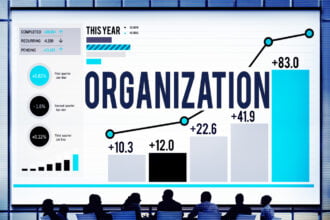Machine learning technology has significantly improved the online experience for millions of Internet users around the world. This is one of the reasons that a growing number of web developers are making it a priority to invest in machine learning tools as part of their UX strategies.
One of the many ways that machine learning can help with UX is by improving accessibility for people with disabilities. MIT published a very fascinating article on this evolving topic. Keep reading to learn several of the most significant ways that machine learning is changing accessibility standards for website managers in every sector.
Machine Learning is Crucial for Helping with Website Accessibility for Anyone with Disabilities
If you are creating a website, you must ensure that it has plenty of engaging content and that people know about it. It is also important to make your website accessible to differently-abled people. The Americans with Disabilities Act and the Web Content Accessibility Guidelines set the standards for accessibility on the internet. These guidelines can be difficult to adhere to, but machine learning tools can improve them
If you design websites, you must adhere to the ADA + WCAG standards. There are four main principles of accessibility that are easy to remember because they spell the word POUR. Web content must be:
- Perceivable
- Operable
- Understandable
- Robust
AI technology can help address all of these factors. AI’s integration in digital products has led to the recognition of its potential in supporting accessibility testing.
AI’s ability to identify data and propose solutions for various problems is highly valued. When AI is trained to understand user requirements on accessibility and inclusiveness, it can effectively address complex accessibility needs. Additionally, AI has the capability to tackle other challenges faced by impaired users. Analyzing a large amount of accessibility requirements and extracting solutions is time-consuming for humans, but AI algorithms can handle this quickly and accurately.
If you are designing a site or simply making improvements to an existing site, there are four things you can do to improve website accessibility to disabled people.
- Make Sure Your Website is Perceivable to Everybody
People with disabilities use different tools to use websites. In many cases, they will use a tool called a screen reader, which converts text to audio. Websites have navigation tools like drop-down menus, pop-ups, and text links. Your navigational tools must be able to work with a screen reader.
Essentially, a person must be able to navigate your website if the images on it are disabled. Internet images have alternative text (alt text), which must accurately and clearly describe the function of the corresponding image.
AI can help you see how various screen readers will read content and identify the best alt text for images. Some alt text generator tools use AI to give the best suggestions.
- Easy Keyboard Navigation
Some people with disabilities are unable to use a mouse. Therefore, they use a keyboard to surf the web. In some cases, they may use a keyboard emulator. You must make sure that your website can be navigated easily with a keyboard so it will be operable to those with disabilities.
A person should be able to easily move around the website and fill out any forms that the site offers.
You can use various simulation tools that use machine learning to mimic user engagement on your site. This will help you see how real users may interact with it.
- Make Your Website Understandable
If you have long-form content on your website, such as blog posts, break up the content with subheadings. It will make the content easier to understand for everyone, especially those persons with learning disabilities.
Not only will using subheadings make your content easier to understand, but It will also improve your website’s search engine optimization. It will make the content easier to scan for people looking for specific information.
You can use AI content generator tools like Rytr.me and ChatGPT to create better content to improve engagement on your site. You can learn more about some of these tools here.
- Make Sure Your Color Contrast Ratios are Compliant
When it comes to the internet, the term “color contrast ratio” applies to the difference between the colors in the background and foreground of a website. The WCAG sets standards for the numerical values of color contrast ratios on websites. A site’s normal text should have a contrast of 4.5:1, and large text, such as headlines, must have a contrast of 3:1.
People who are color-blind must be able to read the content on a website. The text must be robust enough that everyone can see it in natural light.
Machine Learning Aids with Website Accessibility for People with Disabilities
Accessibility compliance can be challenging. Fortunately, there are a number of machine learning tools that help. You can use widgets and other tools that take advantage of machine learning to help you keep your site compliant.











